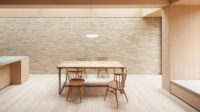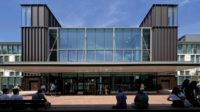Across the world, Covid lockdowns prompted people to reassess their homes. For one London couple, Jeremy and Lisa, plans to leave suburban Wimbledon for more urban Notting Hill were shelved when they realized how much they valued local parks and their own secluded garden, set at the end of a quiet cul-de-sac. Instead, they resolved to demolish their charming but cramped 1930s chalet-bungalow and build anew. A friend’s recommendation led them to 2022 RECORD Design Vanguard Erbar Mattes Architects, which has delivered a relaxed but elegant family home that is precisely attuned to its setting in the garden and to the city beyond.
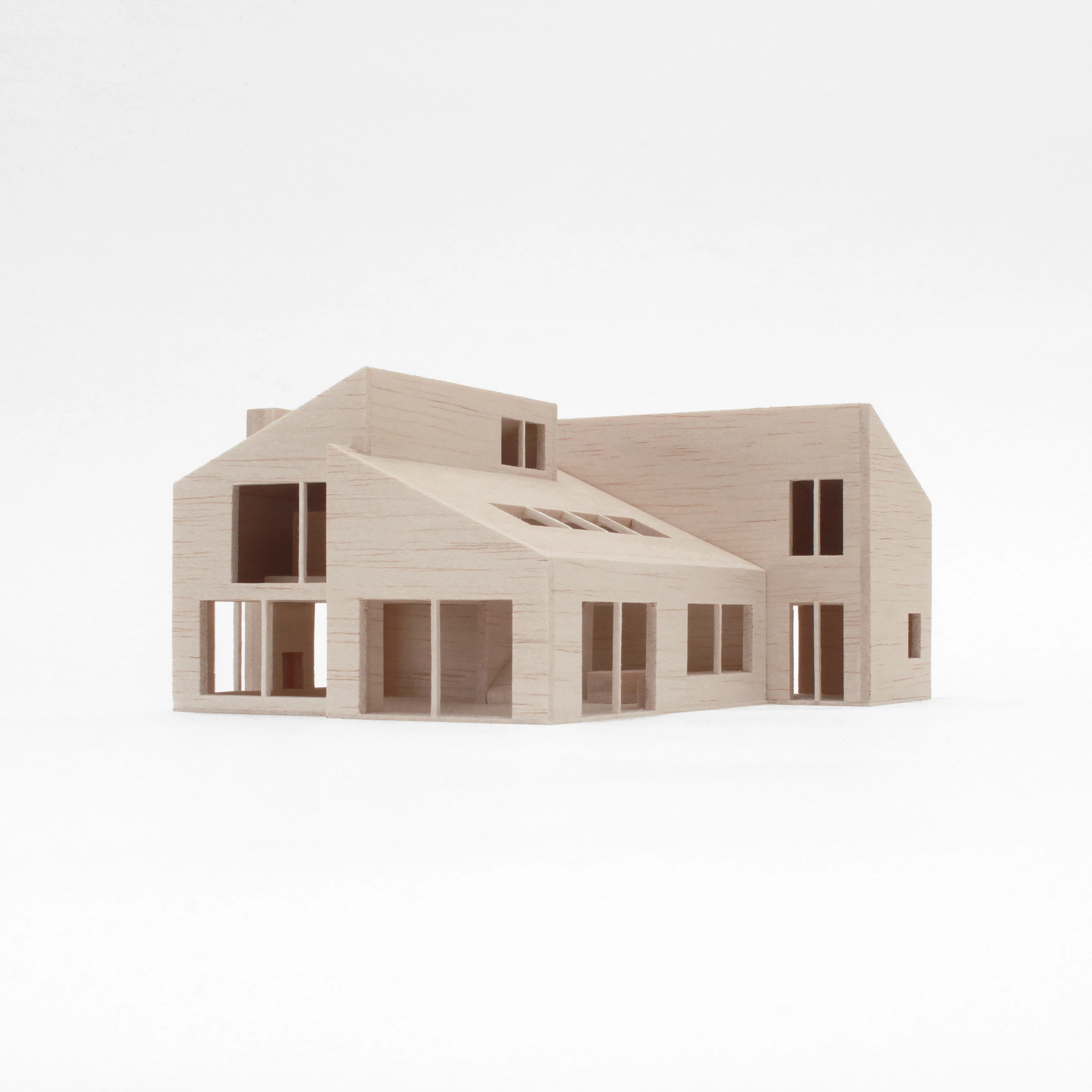
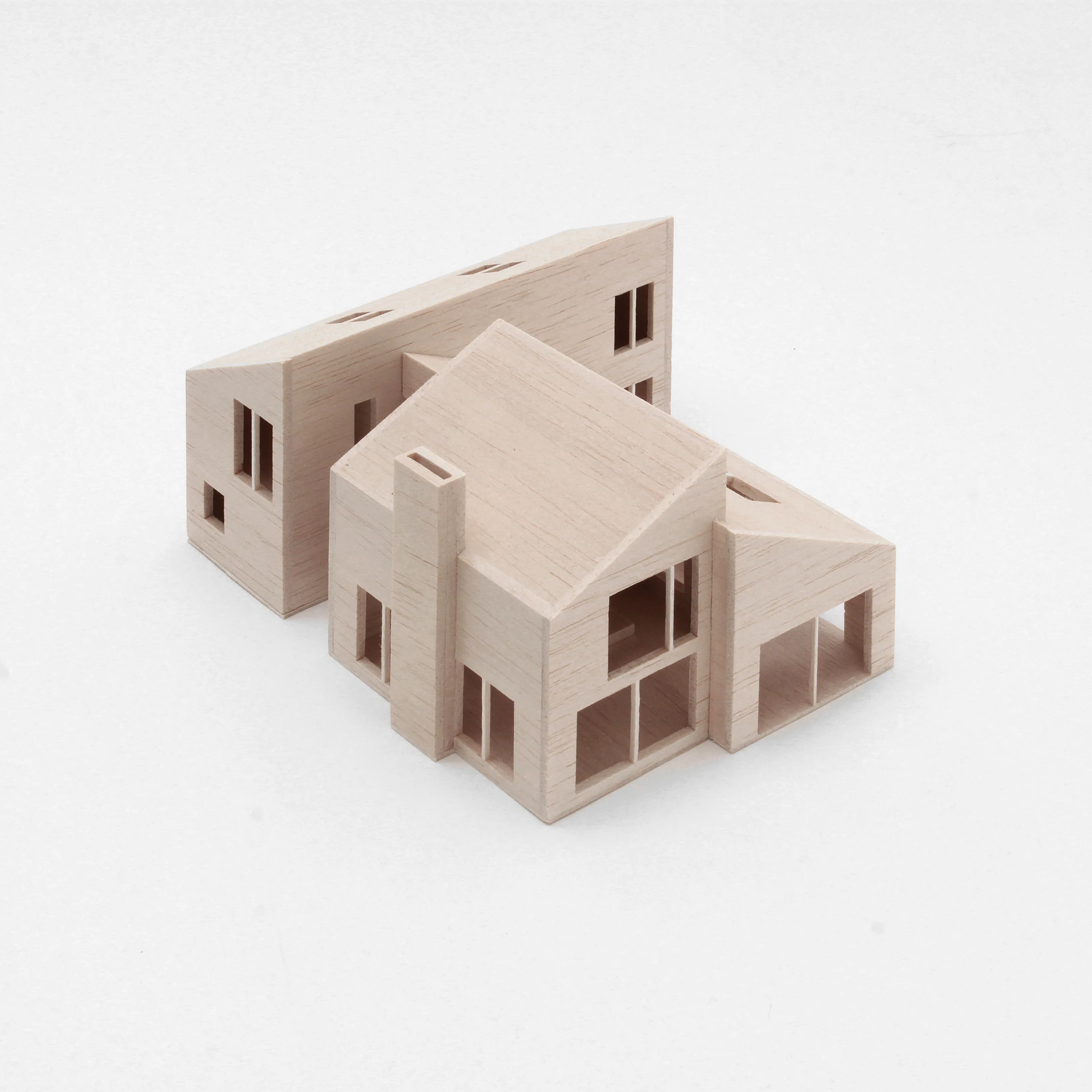
Images courtesy Erbar Mattes
As the connection between inside and out was the clients’ primary concern, they initially envisaged a glassy modernist box. With reassuring confidence, the architects proposed an alternative approach, arguing that the same benefits could be achieved in a contemporary building that reinterprets the character of its late-19th-century neighbors, which would be more likely to win consent from conservative local authorities.
To reduce the apparent scale of the two-story, 3,340-square-foot freestanding house, it is configured as a cluster of three similar blocks, whose mono-pitched roofs all slope upwards towards the center. One presents its gable end to the street, where an entrance gate leads onto a small parking area on the west side. The others, paired back-to-back, are set perpendicular and help to define distinct outdoor areas: a sheltered patio to the north, where the plot is bounded by a tall 17th-century brick wall, and a sunny patchwork of lawns and flowerbeds that extends out to the east and wraps around to the south, where the front door is tucked into a protective niche between two wings.
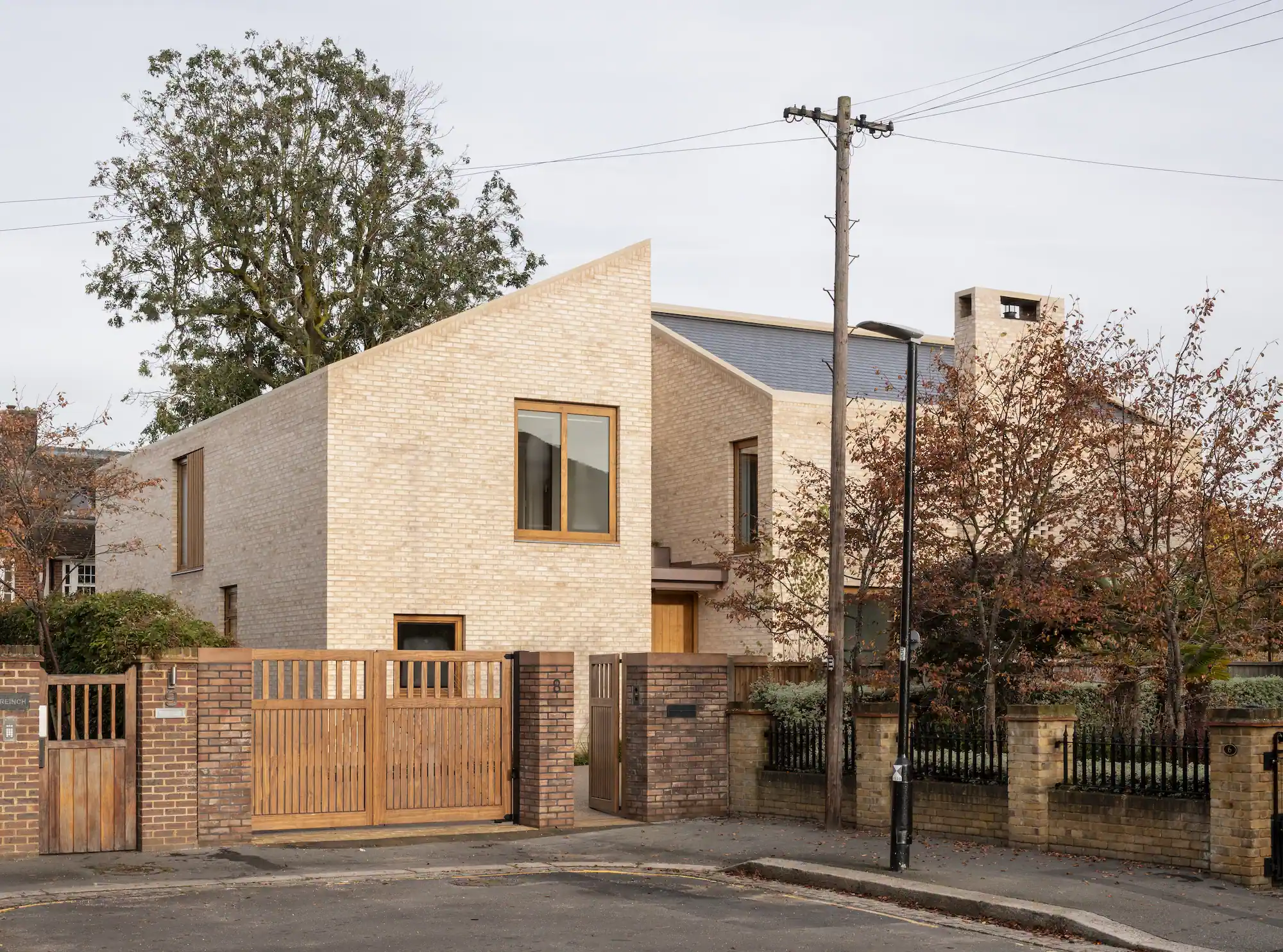
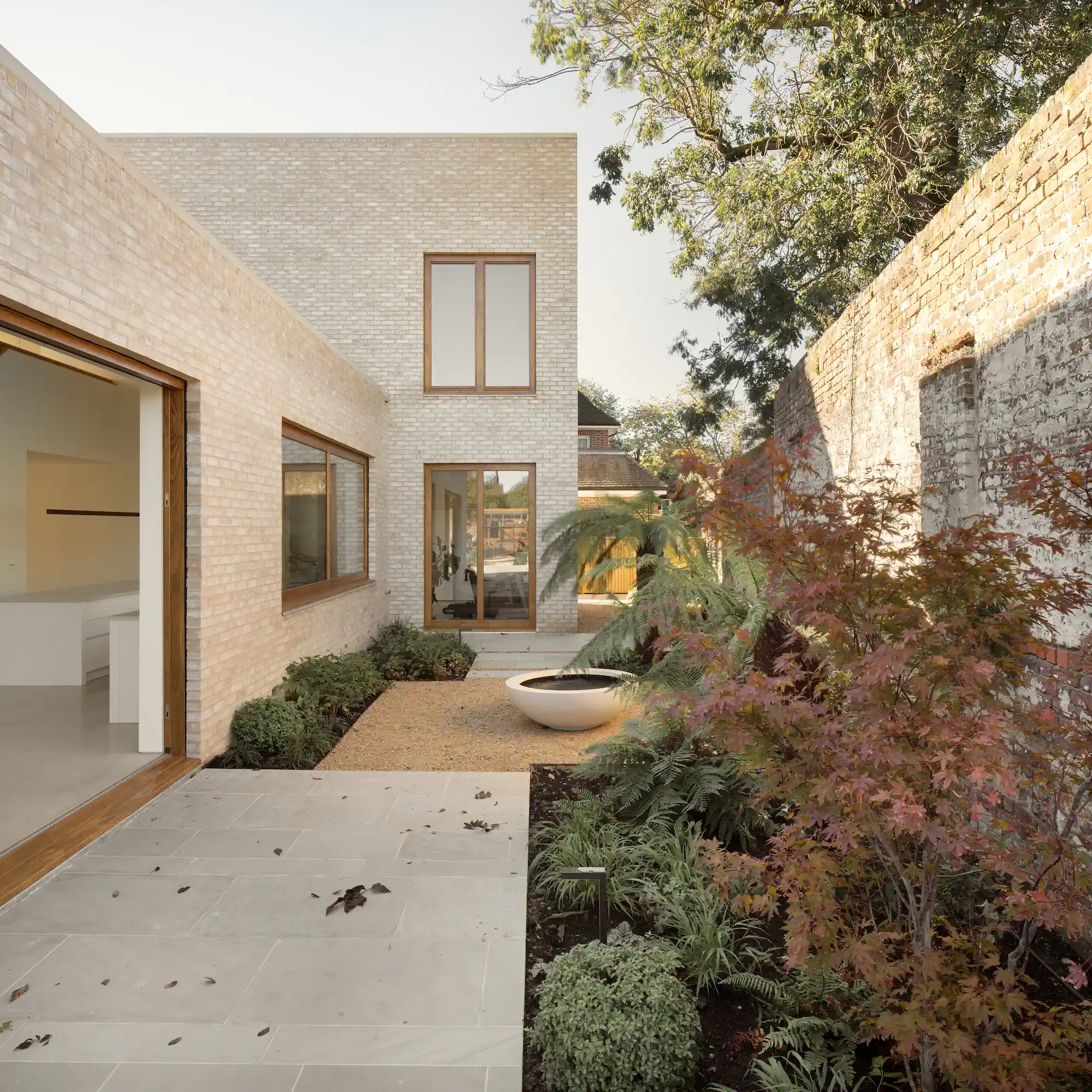
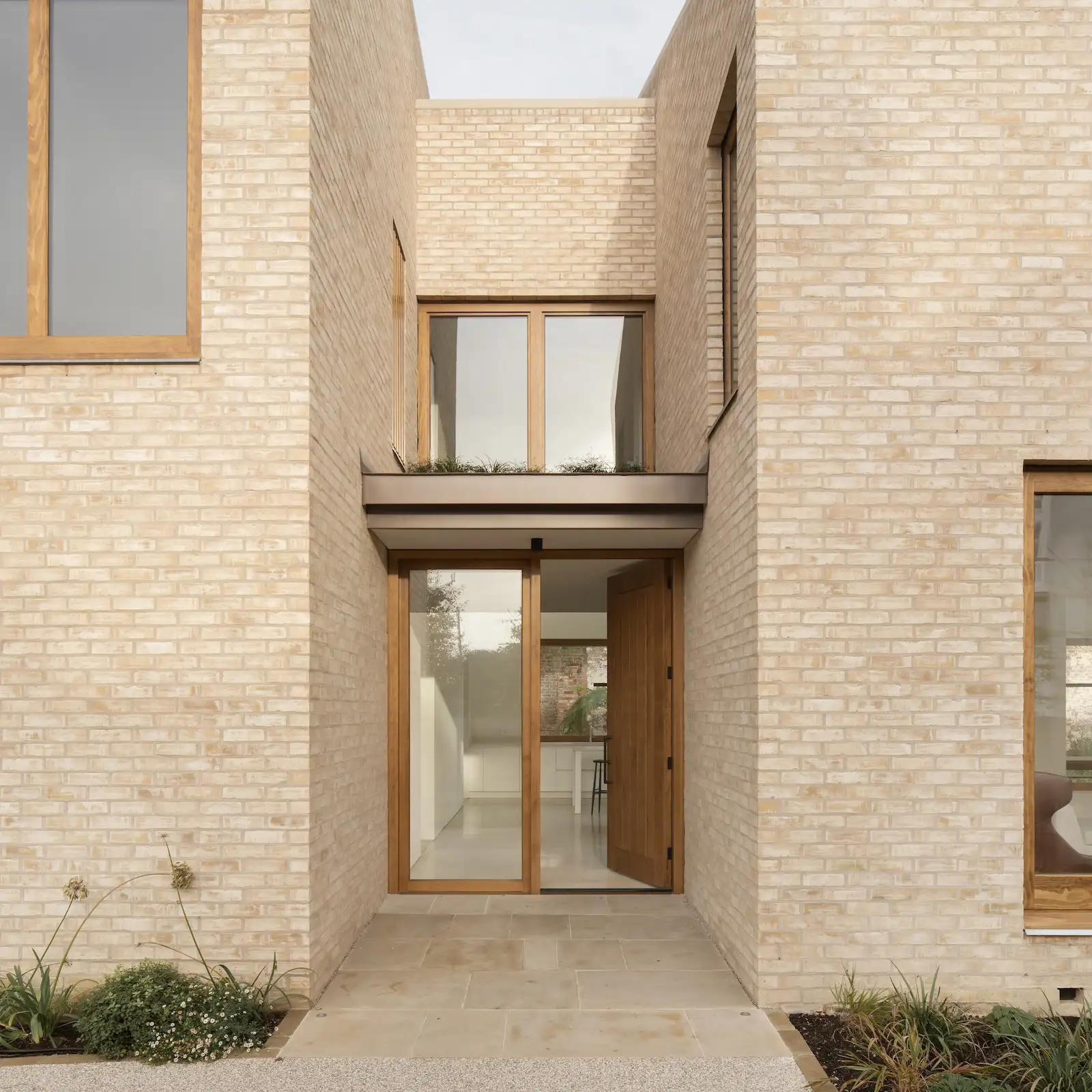
Photos © Ståle Eriksen
Seen from any side, the varied ridge heights and deliberately awkward collisions between the blocks seem both surprising and familiar, recalling the jumbled, ad-hoc composition of London’s older housing. Any risk of ‘fussiness,’ however, is offset by the simple and sober palette of materials. Facades of softly textured waterstruck brick are punched with unusually large windows framed in Accoya, a Monterey pine that has been acetylated to increase its strength and durability. Subtle accents in cast stone recall the details of nearby Edwardian houses, but blend with the buff color of the brickwork and lime mortar so that at a glance the whole angular ensemble might have been carved from a single substance.
“We went through many iterations to find a sculptural form,” recalls architect Demian Erbar, “but the design of the house was really born in the plan.”
For the first-floor living areas, the designers wanted to avoid either the undifferentiated expanses of a fully open plan or subdivision into rooms that might be used only infrequently. Large interconnected spaces in two of the blocks have their own distinct characters. A voluminous double-height kitchen and dining room occupies one entire ‘wing’ and contains a long staircase that rises through the heart of the house. It is a grand but usable and sociable space, with sunbeams pouring in from a giant timber-framed skylight in the roof. The adjacent living room is more intimate, anchored by a weighty hearth and lined by built-in bookcases. Both are linked to a set of smaller, more private rooms in the third wing by axial routes that run the length of the house, with windows at either end.
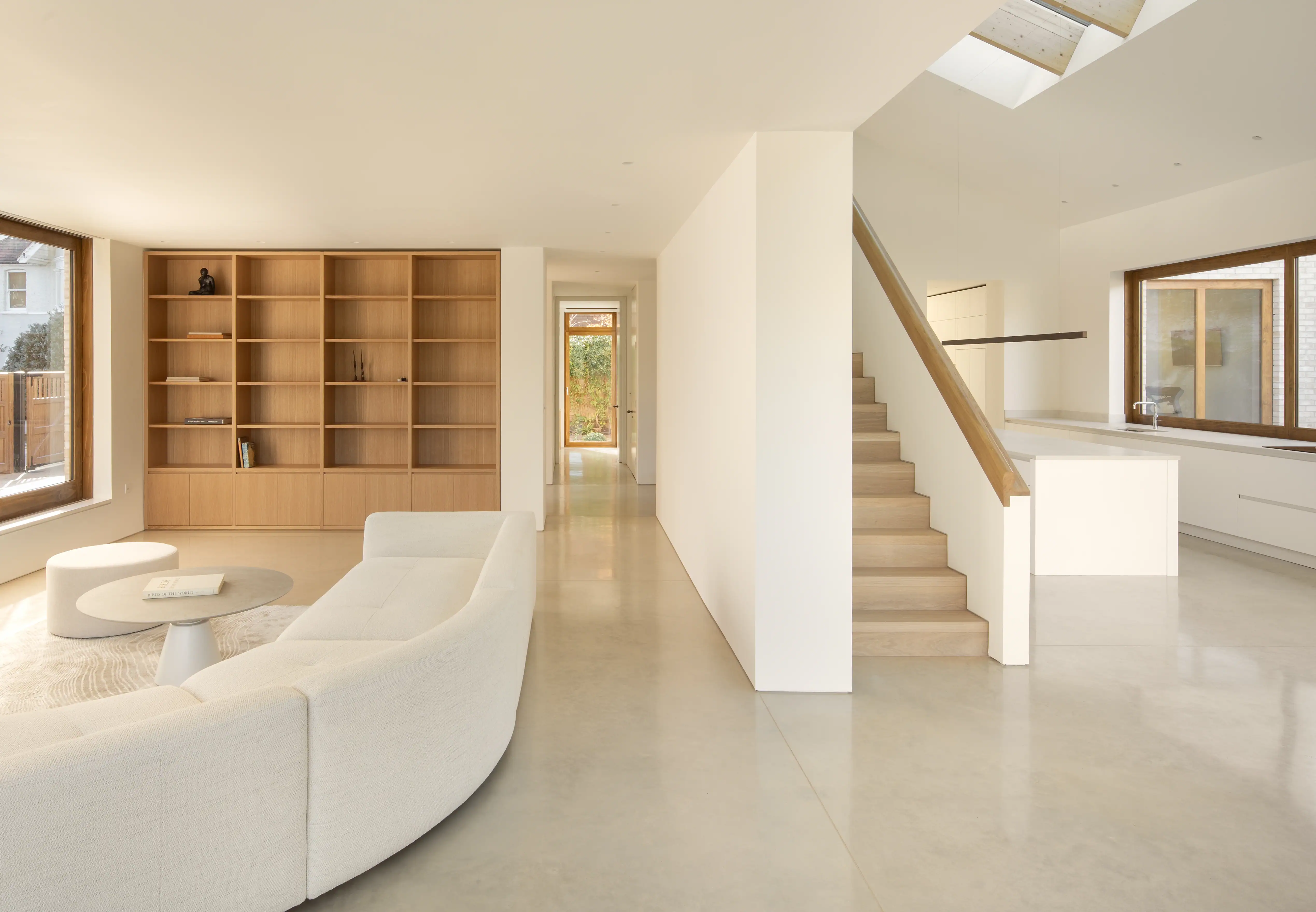
A staircase rises through the heart of the house, bi-secting the shared spaces on the ground floor. Photo © Ståle Eriksen
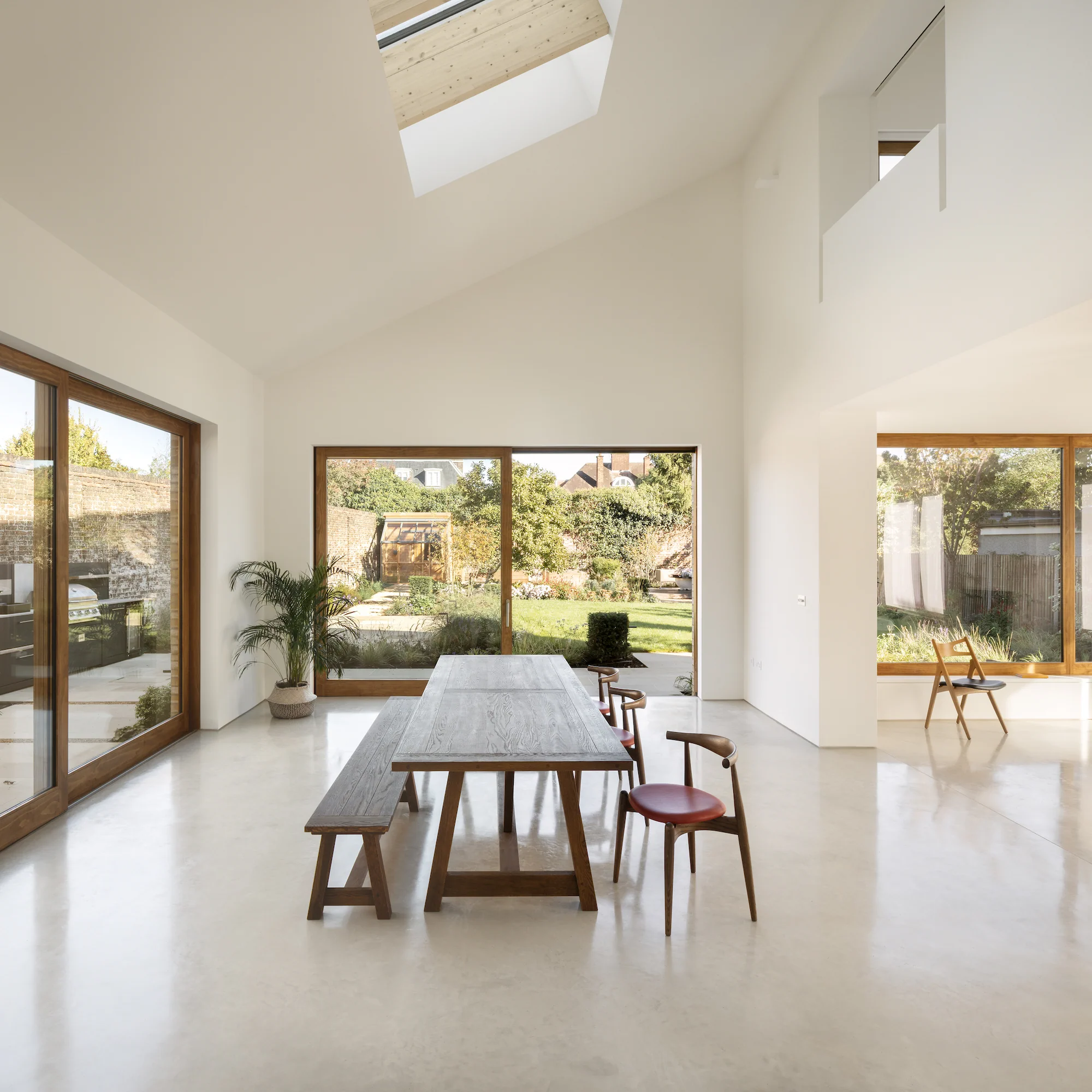
A Juliet balcony attached to the primary bedroom overlooks the kitchen and dining room. Photo © Ståle Eriksen
“In most places throughout the house there are through-views,” says Erbar, “into neighboring spaces and out into the surroundings.” The clients’ favorite is a treat on waking every morning: within the primary bedroom above the living room, a sliding shutter opens to reveal a Juliet balcony over the kitchen, and a view through its long, sloping skylight.
The most important vistas are those of the gardens, visible through windows and sliding doors on every side, and enhanced by the muted tones and low-key detailing of interior finishes. Floors are polished concrete, walls are white-painted plaster with shadow gaps instead of baseboards, oak is used for occasional accents.
That choice was also pragmatic, says Erbar: “It’s a big house, and with complicated details the budget could quickly get out of control.” And the relatively neutral character of the interior should give it greater longevity. “We are always conscious about how much to design,” he continues, “and don’t want to make things that fall out of fashion in a few years’ time.”
The same elements recur in the high-ceilinged upper-floor bedrooms, where the need to preserve neighbors’ privacy required some enjoyable problem-solving in the orientation of windows. Some are screened by hit-and-miss brickwork, and others by battens of Accoya.
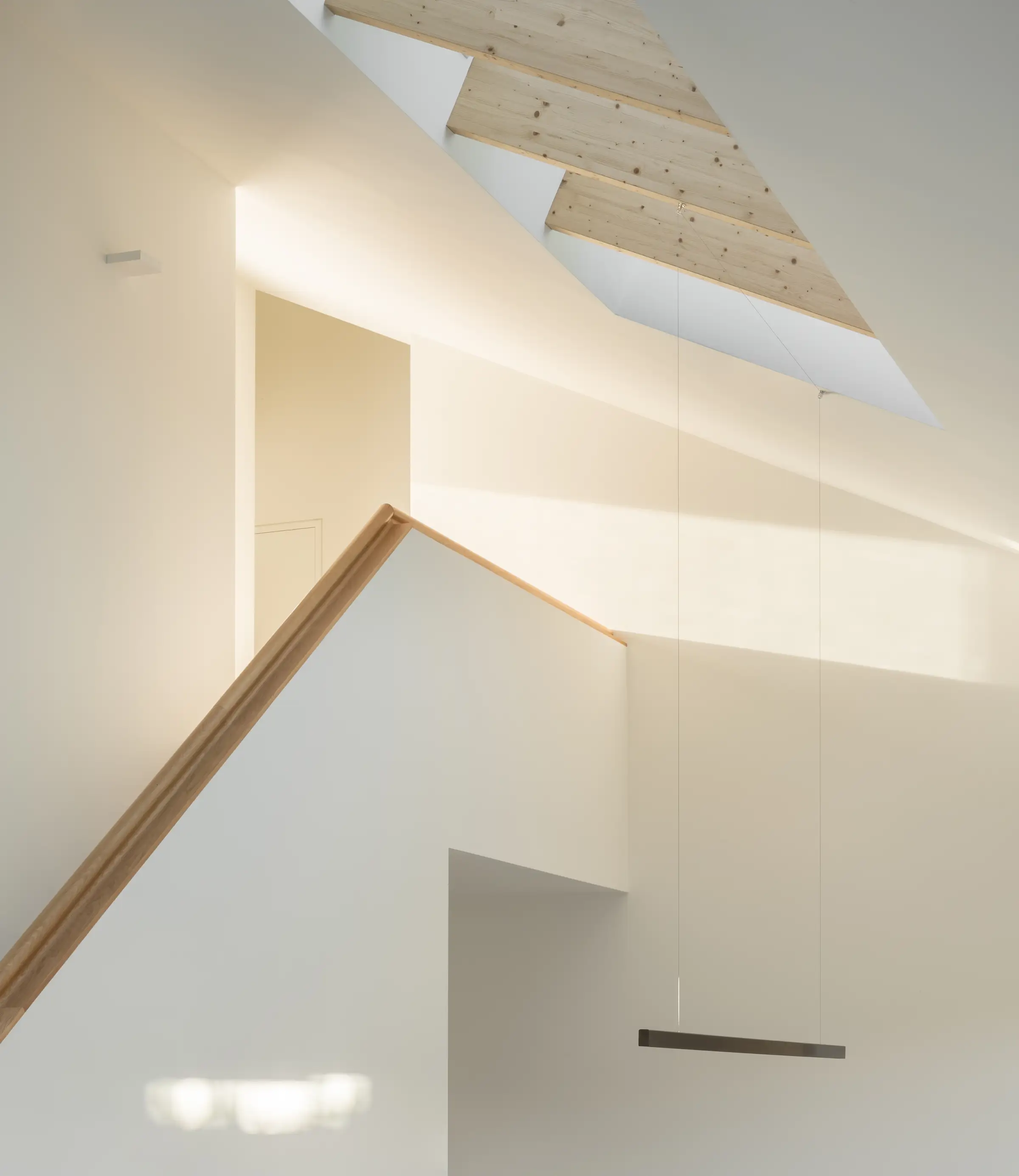
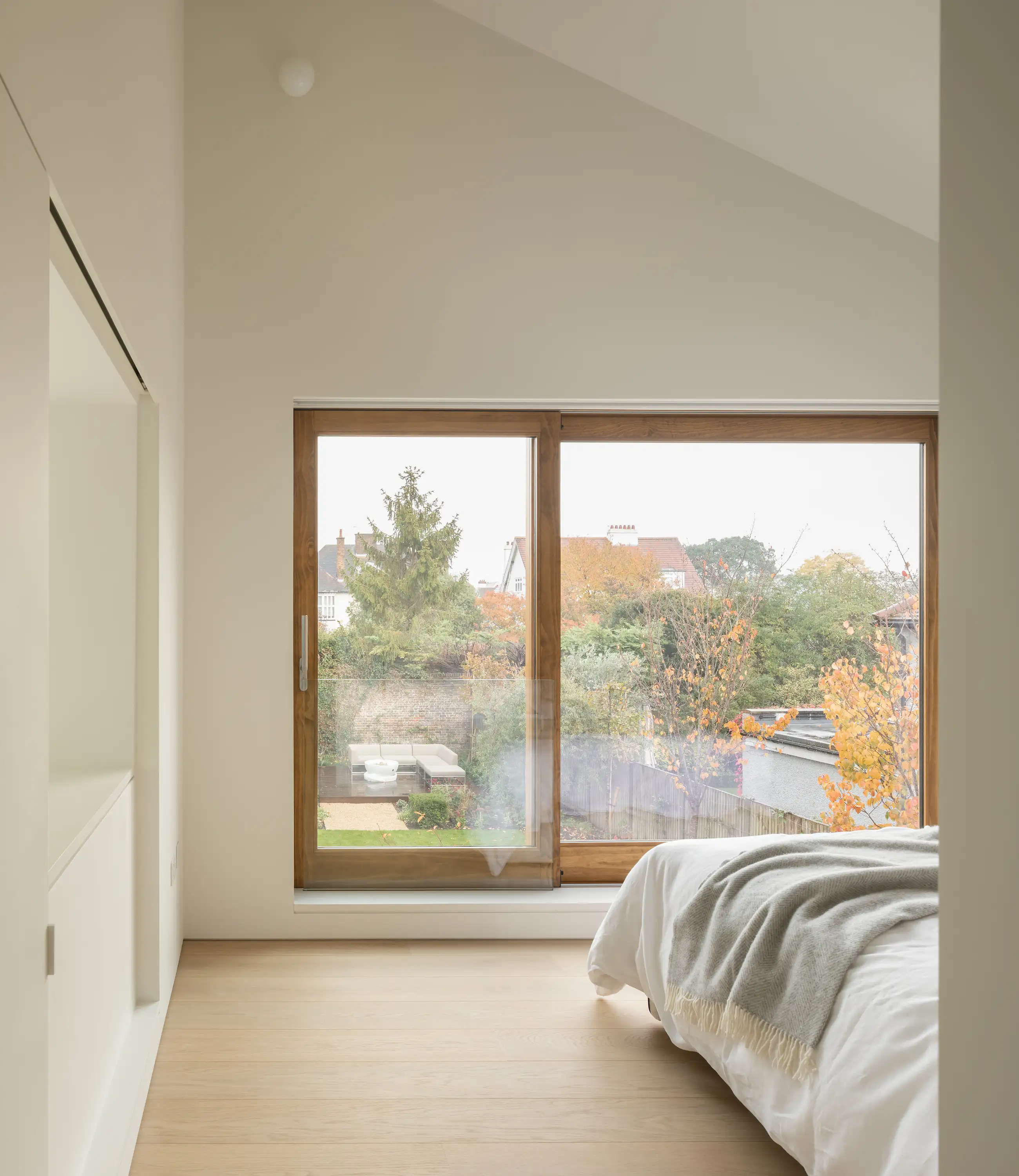
Photos © Ståle Eriksen
Equal dexterity went into the unobtrusive integration of many features that lower the carbon cost of the home. Beneath the weighty brick skin there is a lightweight frame of engineered timber. Custom-made triple-glazed windows and high levels of insulation accounted for a quarter of the build cost. Under the garden there is a ground-source heat pump, and inside, a whole-house ventilation system with heat recovery.
For the clients, having the right house in the right place has surpassed expectations: though not much larger than its predecessor, it feels much more spacious, and in the bright, warm kitchen, surrounded by garden views, the sense of living outdoors can be preserved even when the London weather doesn’t play along. “I’m not that into material ‘things,’” says Jeremy, “but I wake up every morning somewhere that makes me happy in a way that I never knew you could get from a house.”
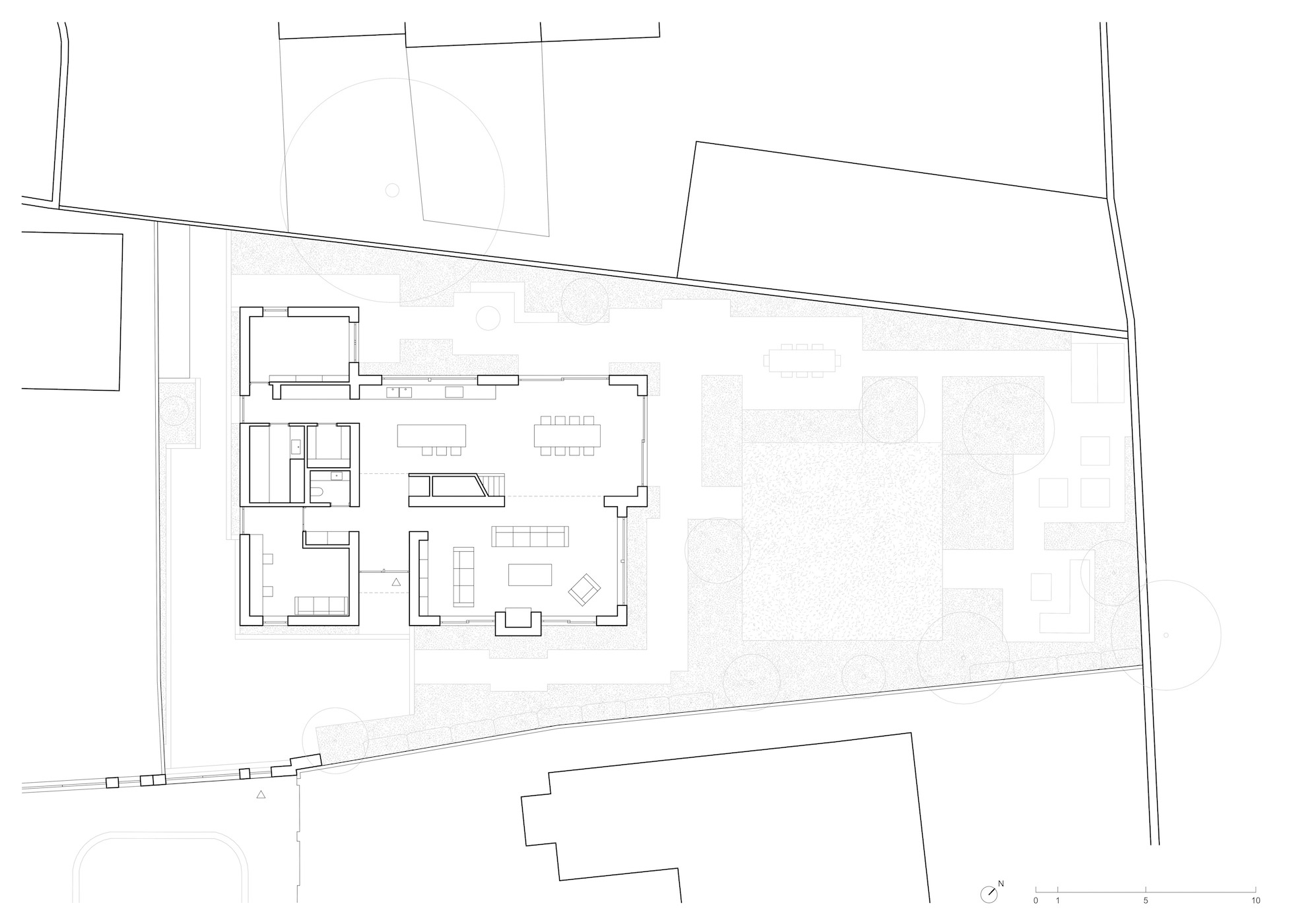
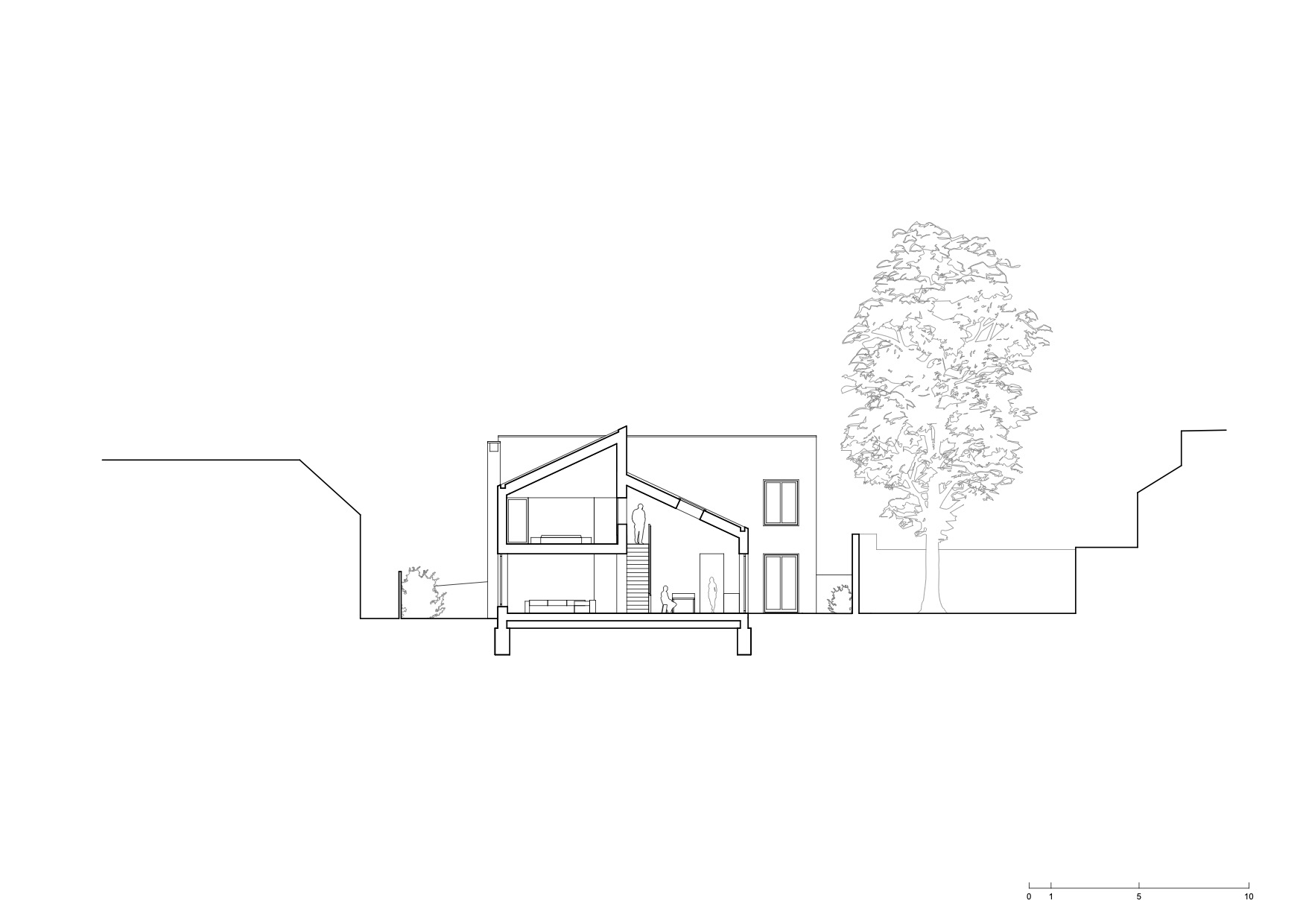
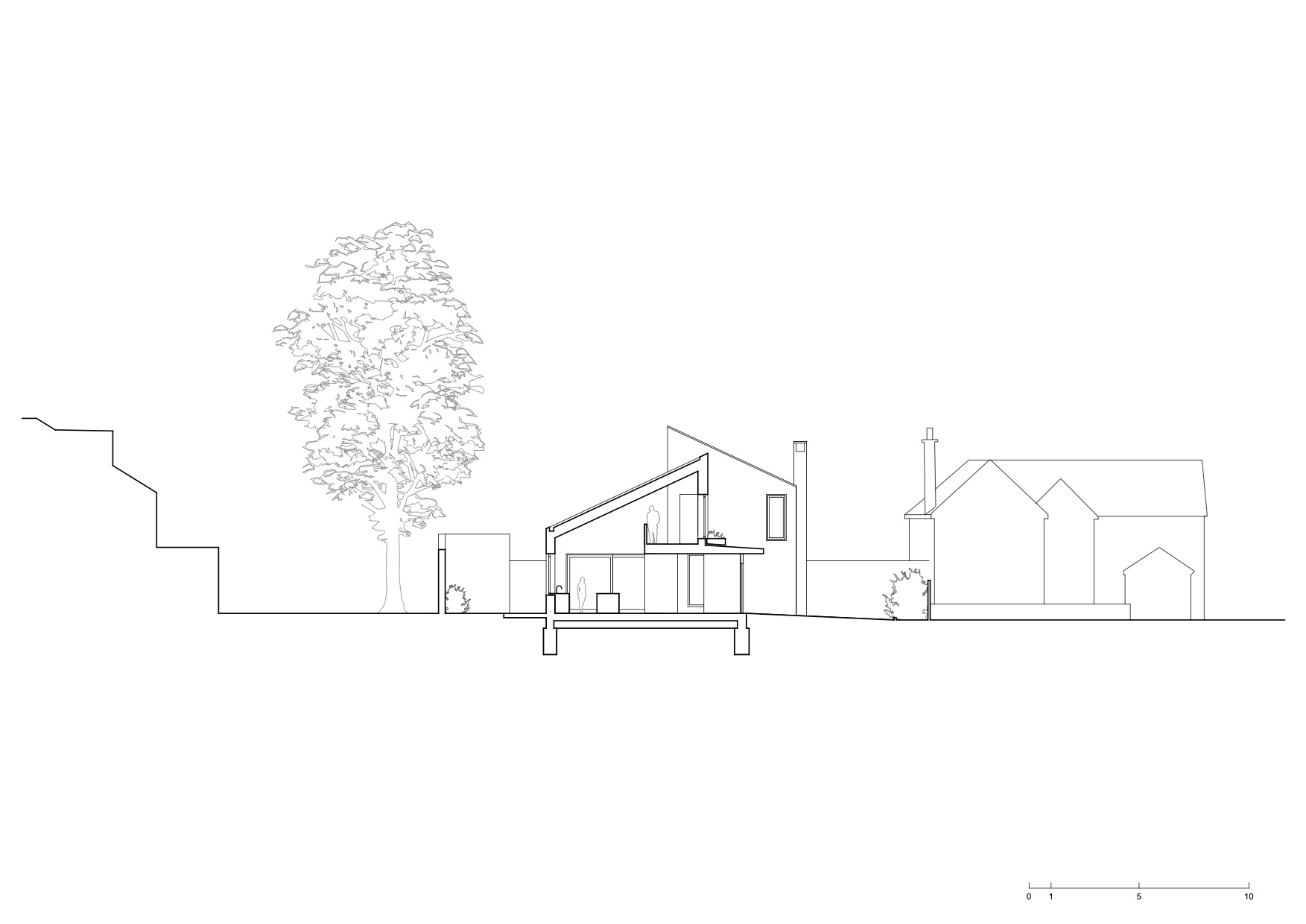
Images courtesy Erbar Mattes, click to enlarge


